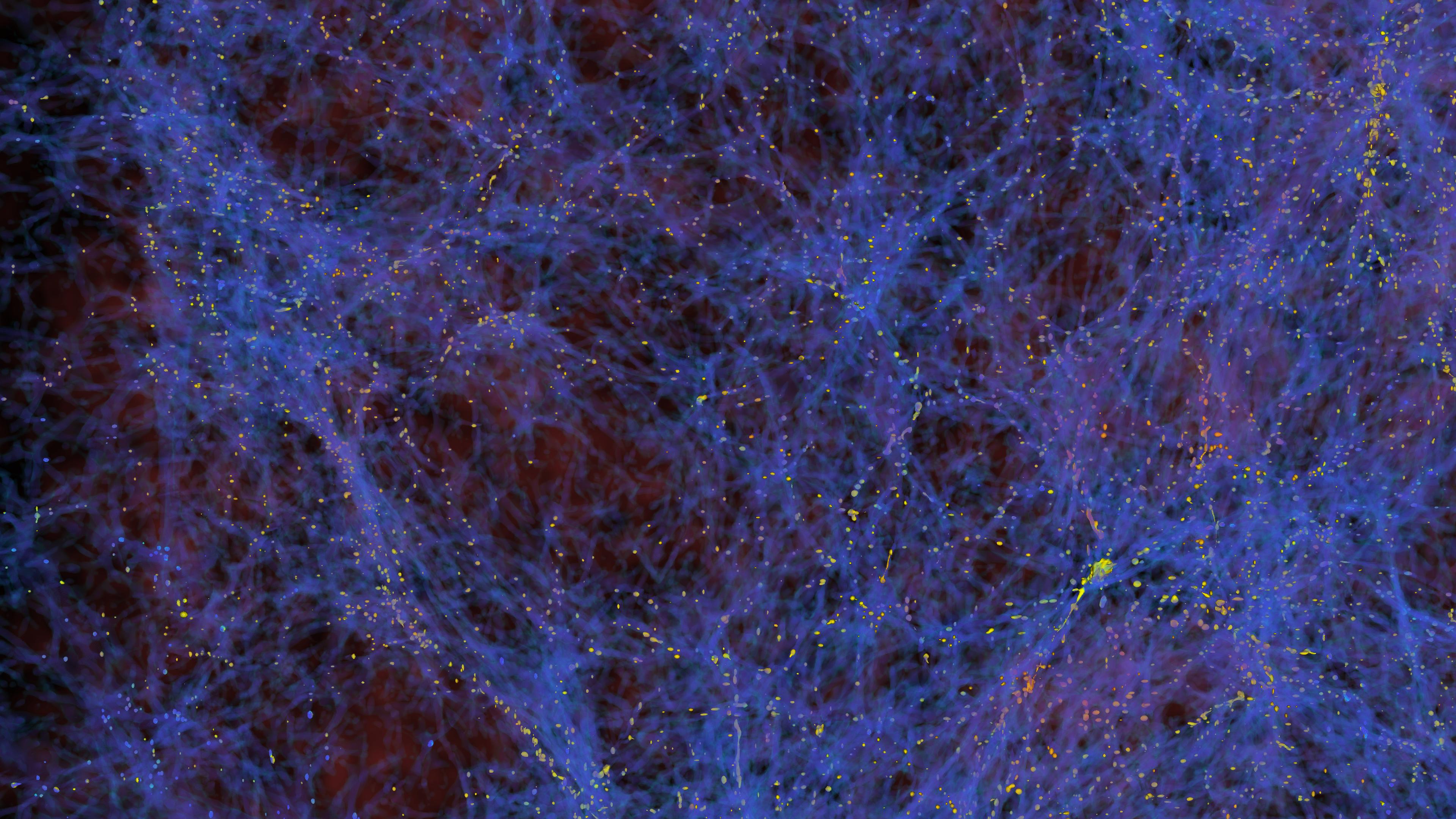Astronomers found a giant “wall” of galaxies hiding in plain sight

Astronomers have found one of the largest structures in the known universe—a “wall” of galaxies that’s at least 1.4 billion light-years long. And given how close it is to us, it’s remarkable that we haven’t seen it before now.
What happened: An international team of scientists reported the discovery of the South Pole Wall in a paper published Thursday in the Astrophysical Journal. The structure is basically a curtain that stretches across the southern border of the universe (from the perspective of Earth) and consists of thousands of galaxies, along with huge amounts of gas and dust.
What do you mean by “wall”? Galaxies aren’t just strewn randomly throughout the universe. Along huge strands of hydrogen, galaxies collect into larger groupings of massive filaments, separated by giant voids of nearly empty space. Each filament is basically a wall of galaxies, stretching for hundreds of millions of light-years. They’re the biggest structures in the known universe. Other identified structures include the Great Wall, the Sloan Great Wall, the Hercules-Corona Borealis Great Wall, and the Bootes Void.
Put together, these walls make up what astronomers call the cosmic web. Piecing together the cosmic web is one of the major pursuits of cosmology—it would not only tell us about the structure of the universe and its interior but could also help us better understand how the universe was formed and how it’s evolved over time.
Why is this one special? It’s so close! The South Pole Wall is just half a billion light-years away. In fact, this is part of the reason it was so hard to find until now—it is situated right behind the Milky Way galaxy, in a place called the Zone of Galactic Obscuration, where the galaxy’s brightness effectively kept the wall shrouded in plain sight.
So how was it found? Cosmological surveys are often done by measuring objects’ redshift: the speed at which those objects seem to be moving away from Earth thanks to the expansion of the universe. The faster an object is receding, the farther away it is.
The team behind the South Pole Wall discovery did redshift observations as part of their survey of the sky, but they also added measurements of the velocity of certain galaxies, which illustrates how they gravitationally interact with one another. This technique can alert astronomers to unseen masses—while it’s normally used to investigate dark matter, it can also just highlight masses obscured by bright light. Using this data, the researchers were able to map out the South Pole Wall for the first time.
Deep Dive
Space
How to safely watch and photograph the total solar eclipse
The solar eclipse this Monday, April 8, will be visible to millions. Here’s how to make the most of your experience.
How scientists are using quantum squeezing to push the limits of their sensors
Fuzziness may rule the quantum realm, but it can be manipulated to our advantage.
The great commercial takeover of low Earth orbit
Axiom Space and other companies are betting they can build private structures to replace the International Space Station.
Stay connected
Get the latest updates from
MIT Technology Review
Discover special offers, top stories, upcoming events, and more.